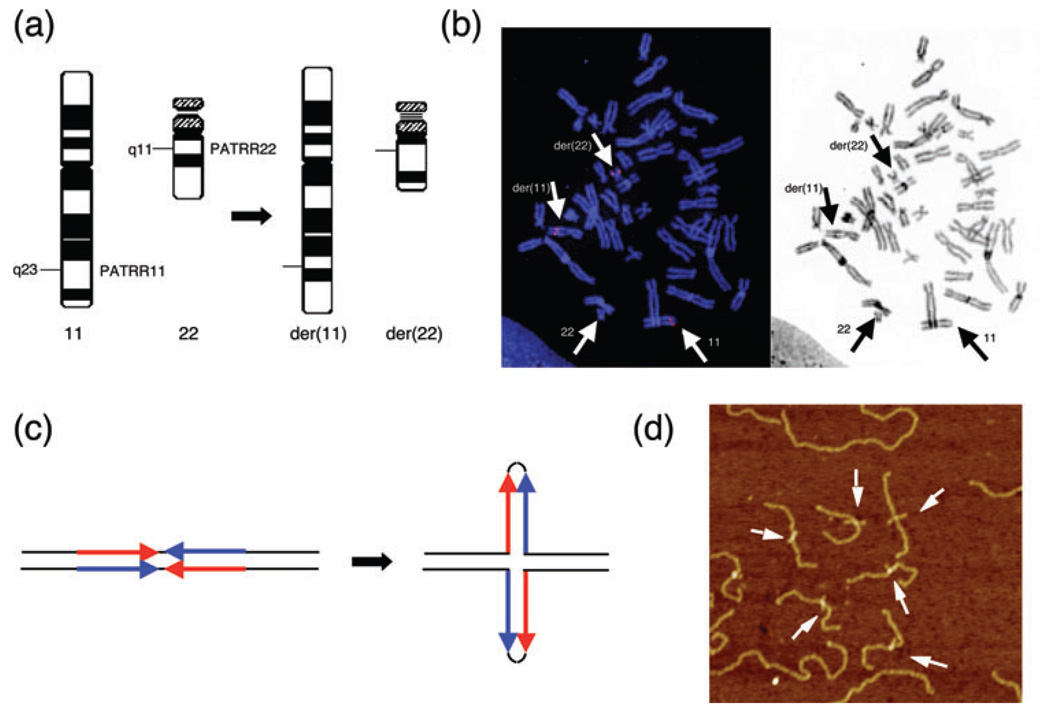Fig. 1.
Palindrome-mediated translocation in humans. (a) Schematic representation of the t(11;22)(q23;q11). The PATRR11 and PATRR22 are located at the breakpoints on 11q23 and 22q11, respectively. (b) FISH analysis of metaphase chromosomes derived from a balanced t(11;22) carrier using a BAC spanning the breakpoint on chromosome 11. The signal from the chromosome 11 BAC is split by the translocation and appears on both the der(11) and the der(22) (left). The same FISH image was inverted to greyscale to show the location of the relevant chromosomes in the metaphase spreads (right). (c) Predicted secondary structure for the palindromic sequence. Short palindromic sequences have the potential to form double-stranded cruciform structures by intrastrand-base pairing in single-stranded DNA. DNA sequences indicated by blue arrows are complementary to those indicated by red arrows. (d) Cruciform extrusion of the plasmid harboring the PATRR11. A plasmid bearing the PATRR11 insert was fixed with psoralen treatment followed by ultraviolet exposure. The PATRR11 fragments were released with restriction enzyme digestion and were visualized using AFM. AFM, atomic force microscopy; BAC, bacterial artifical chromosome; FISH, fluorescent in situ hybridization; PATRR, palindromic AT-rich repeat.

